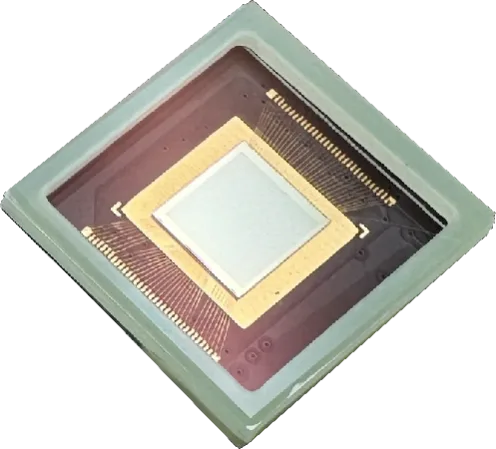
SHENZHEN, CHINA – June 16, 2025 – AlpsenTek, a pioneer in Hybrid Vision Sensing technology, today announced the launch of its groundbreaking event-based vision sensor, the ALPIX-Maloja®. Leveraging the innovative IN-PULSE DiADC architecture, ALPIX-Maloja® delivers the inherent advantages of event cameras – ultra-low power consumption, minimal latency, reduced computation demand and enhanced privacy protection – while establishing a new benchmark for cost-effectiveness in its class. This sensor is designed as a foundational component for next-generation edge AI visual systems, targeting applications in smart home appliances, always-on (AON) perception, intelligent hardware, and real-time intelligent nursing solutions.

The ALPIX-Maloja® sensor directly addresses the critical requirements of modern AI devices. Building upon a decade of innovation and research in event-based vision and neuromorphic sensing by its core team, and leveraging the company’s proven track record in delivering multiple hybrid vision sensors, ALPIX-Maloja® boasts exceptional specifications: high frame rate (1000 fps), wide dynamic range (120dB), and remarkably low power consumption (<4mW @ 1000 FPS). With a resolution of 256 × 256, a pixel size of 20 μm × 20 μm, and a 1/4” optical format, it meets the stringent demands of size, power, and compute-constrained edge vision systems operating in challenging lighting conditions, while also offering significant cost advantages to enable diverse product configurations.
Advantages of ALPIX-Maloja®:
1. Features of Event-Based Vision:
a) Ultra-Low Power Operation: < 4 mW @ 1000fps enables true AON edge applications.
b) Features integrated on-chip change detection.
c) High Sensitivity & Low Latency: maintains high sensitivity for motion and human detection even in low-light conditions.
d) Robust in Complex Lighting: delivers high-speed motion feature regardless of challenging light environments.
e) Inherent Privacy Protection: outputs only sparse event data (typically contours and trajectories generated by moving objects), excluding detailed imagery.
f) Low Data Redundancy & Computation Friendly: generates only 10-20% of the data volume of equivalent frame-based sensors. Compatible with standard low-power SoCs (e.g., ESP32S3) and NPU-equipped MCUs (e.g., STM32N6, RV1106), reducing system computing costs.
2. Innovative IN-PULSE DiADC Architecture for high performance, low power and marvelous cost-efficiency.
Utilizing a novel IN-PULSE DiADC architecture, ALPIX-Maloja® integrates sensing, storage, and basic computation within each pixel unit. This enables independent light intensity change detection, local analog-to-digital conversion, and signal processing directly at the pixel level.
“Our IN-PULSE DiADC architecture allows each pixel to output processed change information directly,” explained Dr. Roger BOSTOCK, Senior Technical Director of AlpsenTek Zurich. “This results in a more compact structure ideal for miniaturization and low power. Crucially, it shortens signal paths, reduces external noise impact, enhances stability, and minimizes bus data traffic and power consumption – essential for embedded devices. Furthermore, the larger pixel size provides greater light sensitivity, maintains high Quantum Efficiency (QE) for improved signal-to-noise ratio, reduces pixel crosstalk from parasitic light effects, lowers readout noise and dark current, and lessens reliance on complex noise reduction algorithms, simplifying design and increasing flexibility.”
“The concept for ALPIX-Maloja®, originated from our Zurich team with early patent groundwork, marking a new branch in our event-sensing exploration,” emphasized Liming CHEN, Co-founder and Executive VP of R&D at AlpsenTek. “Through relentless effort by our European and Chinese teams, coupled with continuous collaboration with diverse clients, AlpsenTek is confident in delivering a highly competitive vision sensor. It aligns with the industry shift from passive ‘seeing’ to active ‘sensing’ in machine vision, and we anticipate its impact in gesture recognition, touchless control, presence detection, pose estimation, and beyond – solidifying its role as the base for low-power edge AI vision systems.”
Typical Applications:
ALPIX-Maloja® seamlessly integrates with traditional edge vision perception, detection, and feature recognition algorithms. It also supports AlpsenTek’s optimized event data processing modules for enhanced performance.
Consumer Electronics (AI-PCs, Tablets, Game Consoles, Smart Displays, Learning Tablets): gesture recognition and pose detection for intuitive human-machine interaction.
- Smart care: fall detection cameras, pose estimation cameras, sensory training cameras for homes, care facilities, and special education institutions, offering real-time, low-intrusion, privacy-centric solutions.
- Smart Home Appliances (TVs, ACs, Fans, Washing Machines, Smart Beds, Smart Dryers, Smart Toilet Seats, Garage Doors): presence detection, touchless appliance control, and gesture recognition for responsive, low-power, privacy-enhanced .
Smart Hardware (Pet Cams, Feeders, Litter Boxes, Bird Monitors, Wildlife Feeders, Robot Vacuums): provides low-power, high-sensitivity, lightweight presence and motion detection.
5. Smart Retail & Transportation: lightweight, non-intrusive, privacy-protecting people counting (e.g., in stores, buses).
6. Always-on (AON) Perception: enables ultra-low-power, continuously active edge monitoring systems
Sampling & Availability:
Samples are now available. For inquiries or sample requests, please contact your AlpsenTek account manager or email: business@alpsentek.com
